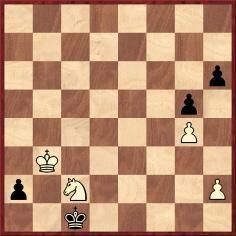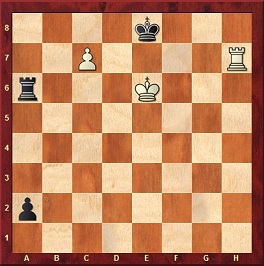Intermarkets' Privacy Policy
Donate to Ace of Spades HQ!
aceofspadeshq at gee mail.com
Buck:
buck.throckmorton at protonmail.com
CBD:
cbd at cutjibnewsletter.com
joe mannix:
mannix2024 at proton.me
MisHum:
petmorons at gee mail.com
J.J. Sefton:
sefton at cutjibnewsletter.com
Christmas is For the Dogs Open Thread
Christmas Cookies Open Thread
Safe Travels Open Thread
Ghosts of Christmas Past Open Thread
Christmas Market Open Thread
Hep Jazzy Christmas Yule Log Open Thread
The Morning Rant
Mid-Morning Art Thread
The Morning Report — 12/25/25
Jim Sunk New Dawn 2025
Jewells45 2025
Bandersnatch 2024
GnuBreed 2024
Captain Hate 2023
moon_over_vermont 2023
westminsterdogshow 2023
Ann Wilson(Empire1) 2022
Dave In Texas 2022
Jesse in D.C. 2022
OregonMuse 2022
redc1c4 2021
Tami 2021
Chavez the Hugo 2020
Ibguy 2020
Rickl 2019
Joffen 2014
maildrop62 at proton dot me
TBD
Sat. Nite Chess Thread 06-02-2012: Fri. Nite Edition [OregonMuse]
Greetings to all the AoSHQ chess nerds, and you know who you are. I'm going to be away from the computer pretty much all day tomorrow, so I'm putting this week's chess thread up a day early.
More on the CN 7643 endgame problem
Last week, I put up an endgame problem that was driving me nuts, which I didn't know the answer to. And it stimulated a good discussion in the comments, which I found very gratifying. Thanks to you all, I think we now have a pretty good idea of the solution, and it's a win for White.
Here is the problem:

White to move
In these types of problems, I always start out by asking, what can Black do to f@*! White up? Well, Black only has one real threat, which is his advanced a-pawn. His strategic goal is to bring his King over and capture the White pawns. In order to do this, he needs to figure out how to leverage his main threat to tie White up in defense so the Black King has time to make a break for it over to the other side of the board.
For White's part, he needs to not get too far behind Black's march to the king-side, and also, he cannot afford to part with the Knight. If, for example, he trades Knight for pawn, he's dead, as Black has now got the drop on him over on the King-side.
The position starts out with Black pretty much in zugzwang, which White can exploit
1. h3 Kd2
Black really doesn't need to go to b1 to defend the pawn, as some commenters have suggested. White really can't take the pawn, at least not yet. If Kxa2, then Kxc2 and Black now goes over and scoops up the pawns.
2. Kb2 Kd3
This pretty much nullifies Black's queening threat. The King can stay on b2 for a time while White uses his Knight to duel with the enemy King.
3. Nb4+ Ke4 4. Nc6 Kf3 5. Nd4+ Kg3 6. Nf5+ Kxh3 7. Nxh6 Kg3
It's pretty much over at this point. White can now take the a-pawn and then join the fray on the other side of the board. If Black tries to manoeuver his King around to attack the Knight, it can go to f5. A typical continuation might be:
8. Kxa2 Kf4 9. Kb3 Ke5 10. Kb2 Kf6 11. Kc3 Kg6 12. Nf5 Kf6 13. Kd4 Ke6 14.
Ng7+ Kf6 15. Nh5+ Ke6 16. Ke4 Kf7 17. Kf5 etc.
Thanks to moron commenters Philip, DJ, rtw, TSgt Ciz, MFG, CAL and others for providing analysis.
Commenter MFG had an interesting idea, inspired by one of his correcspondence games:
1. Na1 Kb1 2. Kc3! Kxa1 3. Kc2 h5 4. gxh5 g4 5. h6 g3 6. h7 gxh2 h8B mate
Very clever, but I think Black can avoid it by not taking the Knight. Instead, his second move should be Kc1 and now it's unclear how White can make any progress in this new direction without having it morph back into the main line.
What a fun problem. Again, thanks to Edward Winter's excellent Chess History site for it.
Another tricky endgame
Rook and pawn endgames are always complex and ripe for discussion. This particular one is from the 1st issue of Chess, a British magazine published in 1935. It's not the BCM, I believe.

Bogoljubov (White)
The magazine text reads: "Bogoljubov gave this up as a draw. Actually, he could have won. How?"
Game of the Week
This week's famous chess game is Alekhine v. Yates, 1922. White gets an open file, and then seizes some crucial dark squares, and then finishes it off with a surprising sacrifice.
You can play through it yourself here.
Thanks to those of you who have sent me tips for this thread. They may be sent to me at
OregonMuse
and then the at sign
followed by yahoo
and then dot
com
See you next week!
Orson: "61 Neil has some thoughts on what you should leave ..."
"Perfessor" Squirrel: "Funny you should mention it. It's a five dog night ..."
tubal: "93 Nothing I hope. We need an optimist around the ..."
Ben Had: "Bad luck to give a wallet without a coin or bill ..."
Soothsayer : " I think today is Gen Flynn's birthday. Or yester ..."
Tom Servo: " 59 SanFranpsycho, that is my understanding so I ..."
Bertram Cabot, Jr.: " [i]Nothing I hope. We need an optimist around th ..."
mindful webworker - howling at the reindeer: "Funny you should mention it. It's a five dog night ..."
tubal: "88 Had a pleasant quiet day with the family and a ..."
Hokey Pokey: "Tabletop corn hole ..............................g ..."
Braenyard - some Absent Friends are more equal than others _ : "General Mike Flynn@GenFlynn . 1h My POSITIVITY ju ..."
Christmas is For the Dogs Open Thread
Christmas Cookies Open Thread
Safe Travels Open Thread
Ghosts of Christmas Past Open Thread
Christmas Market Open Thread
Hep Jazzy Christmas Yule Log Open Thread
The Morning Rant
Mid-Morning Art Thread
The Morning Report — 12/25/25
Paul Anka Haiku Contest Announcement
Integrity SAT's: Entrance Exam for Paul Anka's Band
AllahPundit's Paul Anka 45's Collection
AnkaPundit: Paul Anka Takes Over the Site for a Weekend (Continues through to Monday's postings)
George Bush Slices Don Rumsfeld Like an F*ckin' Hammer
Democratic Forays into Erotica
New Shows On Gore's DNC/MTV Network
Nicknames for Potatoes, By People Who Really Hate Potatoes
Star Wars Euphemisms for Self-Abuse
Signs You're at an Iraqi "Wedding Party"
Signs Your Clown Has Gone Bad
Signs That You, Geroge Michael, Should Probably Just Give It Up
Signs of Hip-Hop Influence on John Kerry
NYT Headlines Spinning Bush's Jobs Boom
Things People Are More Likely to Say Than "Did You Hear What Al Franken Said Yesterday?"
Signs that Paul Krugman Has Lost His Frickin' Mind
All-Time Best NBA Players, According to Senator Robert Byrd
Other Bad Things About the Jews, According to the Koran
Signs That David Letterman Just Doesn't Care Anymore
Examples of Bob Kerrey's Insufferable Racial Jackassery
Signs Andy Rooney Is Going Senile
Other Judgments Dick Clarke Made About Condi Rice Based on Her Appearance
Collective Names for Groups of People
John Kerry's Other Vietnam Super-Pets
Cool Things About the XM8 Assault Rifle
Media-Approved Facts About the Democrat Spy
Changes to Make Christianity More "Inclusive"
Secret John Kerry Senatorial Accomplishments
John Edwards Campaign Excuses
John Kerry Pick-Up Lines
Changes Liberal Senator George Michell Will Make at Disney
Torments in Dog-Hell
The Ace of Spades HQ Sex-for-Money Skankathon
A D&D Guide to the Democratic Candidates
Margaret Cho: Just Not Funny
More Margaret Cho Abuse
Margaret Cho: Still Not Funny
Iraqi Prisoner Claims He Was Raped... By Woman
Wonkette Announces "Morning Zoo" Format
John Kerry's "Plan" Causes Surrender of Moqtada al-Sadr's Militia
World Muslim Leaders Apologize for Nick Berg's Beheading
Michael Moore Goes on Lunchtime Manhattan Death-Spree
Milestone: Oliver Willis Posts 400th "Fake News Article" Referencing Britney Spears
Liberal Economists Rue a "New Decade of Greed"
Artificial Insouciance: Maureen Dowd's Word Processor Revolts Against Her Numbing Imbecility
Intelligence Officials Eye Blogs for Tips
They Done Found Us Out, Cletus: Intrepid Internet Detective Figures Out Our Master Plan
Shock: Josh Marshall Almost Mentions Sarin Discovery in Iraq
Leather-Clad Biker Freaks Terrorize Australian Town
When Clinton Was President, Torture Was Cool
What Wonkette Means When She Explains What Tina Brown Means
Wonkette's Stand-Up Act
Wankette HQ Gay-Rumors Du Jour
Here's What's Bugging Me: Goose and Slider
My Own Micah Wright Style Confession of Dishonesty
Outraged "Conservatives" React to the FMA
An On-Line Impression of Dennis Miller Having Sex with a Kodiak Bear
The Story the Rightwing Media Refuses to Report!
Our Lunch with David "Glengarry Glen Ross" Mamet
The House of Love: Paul Krugman
A Michael Moore Mystery (TM)
The Dowd-O-Matic!
Liberal Consistency and Other Myths
Kepler's Laws of Liberal Media Bias
John Kerry-- The Splunge! Candidate
"Divisive" Politics & "Attacks on Patriotism" (very long)
The Donkey ("The Raven" parody)

